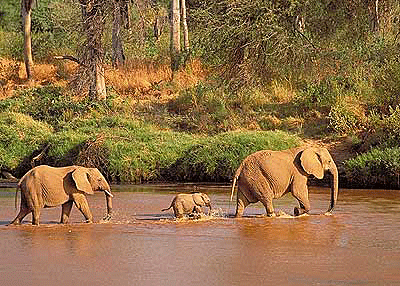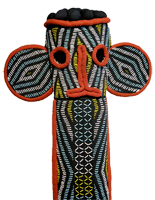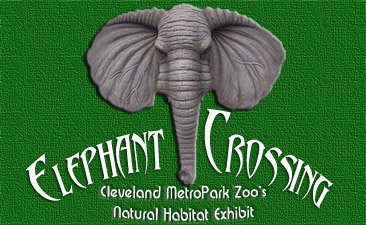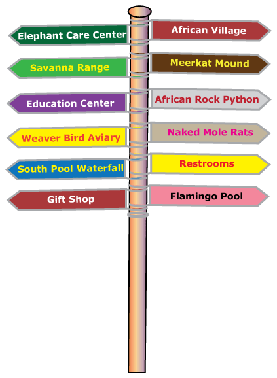Zoo's Elephant History
In November 1940,a new Asian elephant arrived at the Zoo. The Cleveland News sponsored an elephant naming contest, with the winning name "Osa" submitted by a 12-year-old boy from Cleveland Heights. However, the elephant had a name, "Frieda," to which she had responded for many years. It's extremely difficult to change names in the middle of an elephant's life. A few years after the elephant had been living at the Zoo, one of her ex-trainers happened to visit her, and called to her by her original name. She responded in dramatic fashion and from then on, everyone called her Frieda. Frieda, the beloved Indian elephant, died on November 27, 1956. Accounts of her age varied from 56 to 72. She was one of the older elephants in the country and succumbed to a cerebral hemorrhage. In 1955, Zoo staff and supporters organized an African safari and obtained three elephants, two hippos, two rhinos, three giraffes, and many smaller animals. A year later, the Zoo's Pachyderm Building opened to house many of the animals acquired on the safari.
African Elephant Crossing Exhibit
African Elephant Crossing exhibit will open May 2011 and be a state of the art habitat, which will quadruple the elephants' living space. With this planned expansion, the Zoo will increase its number of elephants from a group of three to a herd of eight to ten African Elephants. least one of the new elephants will be a bull, and eventually the herd will include calves. The exhibit will feature two large ranges for roaming, spread out over five acres of lightly wooded grasslands. The ranges will include deep ponds so that the elephants can swim, and expanded sleeping quarters.
Parts of the ranges will be heated, to maximize the elephants habitat during the winter. In addition to expanding the number of African Elephants, the African Elephant Crossing will include meerkats, naked mole rats, African Rock Pythons, and several species of colorful "Weaver" birds. African Elephant Crossing will place Cleveland Metroparks Zoo at the forefront of modern elephant care. With the Zoo’s more than 100-year commitment to caring for elephants, Cleveland Metroparks Zoo showcases its place as a national leader in efforts to protect these endangered animals. The population of African elephants in the wild has plummeted from 1.5 million to fewer than 500,000 in just the past 20 years. These majestic animals are in need of help, and the Zoo's African Elephant Crossing aims to connect people to elephants and teach them about the things they can do in their daily lives to help prevent elephants from becoming extinct.


The focal point of African Elephant Crossing is the actual "Crossing" -- the only place in the exhibit where African elephants and humans will commonly tread, albeit not at the same time. It's the feature that gives the exhibit its name and also the visitor entrance into the exhibit. Upon entering African Elephant Crossing, Zoo visitors will pass through the "Crossing," a gateway that will be periodically closed to allow the elephants to migrate between the two large elephant habitats of African Elephant Crossing -- the Savanna Range and the Mopani Range. Once through the "Crossing," visitors will be immersed in a cultural environment reminiscent of the river valleys of Botswana. The main gathering area, called the Kgotla, will serve as a meeting place for families and field trips and contain activities such as storytelling, dance and music to illustrate the role of wildlife in African culture.



